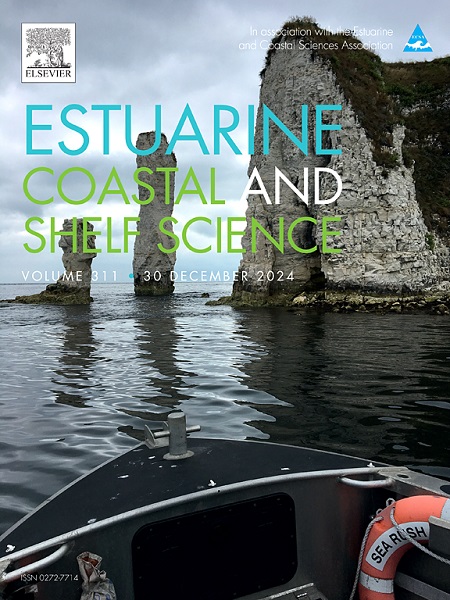不同种群的南极脊鱼在关键的生活史特征上存在差异
IF 2.6
3区 地球科学
Q1 MARINE & FRESHWATER BIOLOGY
引用次数: 0
摘要
在过去的1000万年里,南极南极鱼形成了一种适应性辐射,在南大洋中多样化。大约三分之一的南极鱼的生物学和生活史已经被研究过,然而,最常见的是在一个单一的地点。由于物种分布可能是不连续的,并取决于环境条件,当地种群可能在遗传和表型上与遥远的同种物种有很大的不同。在南极鱼类中,15种吸水龙的分布范围从地下低温生境到深海,许多吸水龙可能具有环极地分布。在这里,我们分析了两个不同的地理区域:南极半岛西部的峡湾Andvord湾和浮冰带边缘的威德尔海的notothen Trematomus scotti的生活史特征。这两个种群居住在纬度、温度和冰盖影响下的环境条件差异很大的地区,从而使研究环境对生活史特征的影响成为可能。我们首先没有发现基于线粒体标记mt-co1的实质性遗传异质性的证据。然而,安沃德湾的鱼比威德尔海的同类长得更快,体长也更长。此外,与威德尔海的雌性相比,安沃德湾的雌性繁殖力更高,但产卵量较小。因此,这两个种群表现出不同的生活史,可能是对当地环境条件的反应。诸如此类的当地生活史特征对于评估一个物种对环境变化的脆弱性至关重要。本文章由计算机程序翻译,如有差异,请以英文原文为准。

Different populations of the Antarctic notothen fish Trematomus scotti differ in key life history traits
Antarctic notothenioid fish form an adaptive radiation that diversified in the Southern Ocean over the past 10 million years. The biology and life history of about a third of notothenioids have been studied, however, most frequently from a single location. Because species distributions can be discontinuous and depend on environmental conditions, local populations might differ substantially both genetically and phenotypically from distant conspecifics. Among notothenioids, the 15 Trematomus species diversified to occupy environments ranging from subsurface cryopelagic habitats to the deep sea and many Trematomus species likely have circumpolar distributions. Here, we analyzed life history traits of the notothen Trematomus scotti from two distinct geographic areas: Andvord Bay, a fjord on the Western Antarctic Peninsula, and the Weddell Sea at the edge of pack ice zones. These two populations inhabit drastically different areas with important differences in environmental conditions driven by latitude, temperature and ice cover, thus enabling the study of the effects of the environment on life history traits. We first found no evidence for substantial genetic heterogeneity based on the mitochondrial marker mt-co1. Fish in Andvord Bay, however, grew faster and reached longer sizes than congeners in the Weddell Sea. Furthermore, females in Andvord Bay had higher fecundity but produced smaller eggs compared to females in the Weddell Sea. Thus, these two populations of T. scotti displayed distinct life histories likely in response to local environmental conditions. Local life history traits such as these are crucial to consider to evaluate the vulnerability of a species to environmental change.
求助全文
通过发布文献求助,成功后即可免费获取论文全文。
去求助
来源期刊
CiteScore
5.60
自引率
7.10%
发文量
374
审稿时长
9 months
期刊介绍:
Estuarine, Coastal and Shelf Science is an international multidisciplinary journal devoted to the analysis of saline water phenomena ranging from the outer edge of the continental shelf to the upper limits of the tidal zone. The journal provides a unique forum, unifying the multidisciplinary approaches to the study of the oceanography of estuaries, coastal zones, and continental shelf seas. It features original research papers, review papers and short communications treating such disciplines as zoology, botany, geology, sedimentology, physical oceanography.

 求助内容:
求助内容: 应助结果提醒方式:
应助结果提醒方式:


